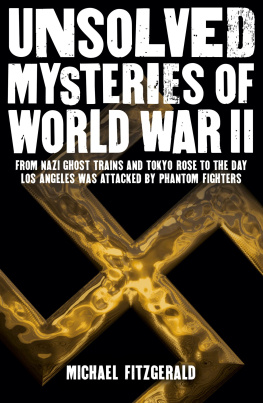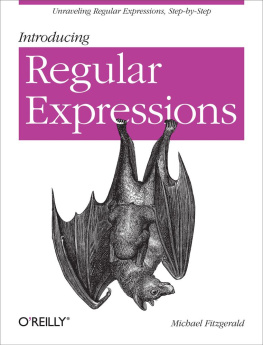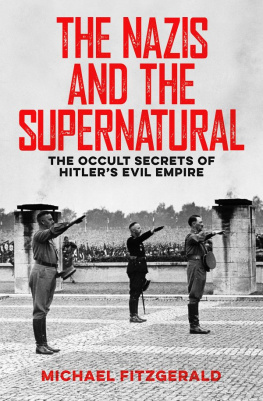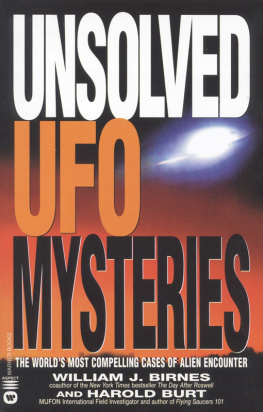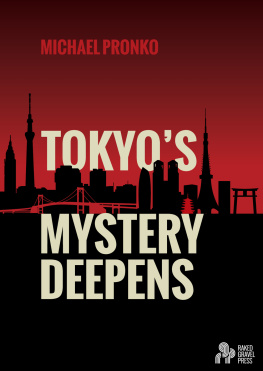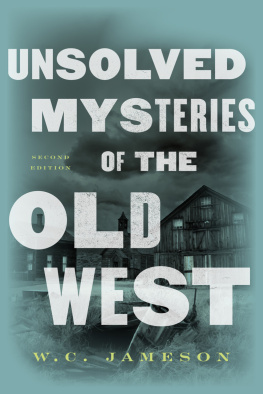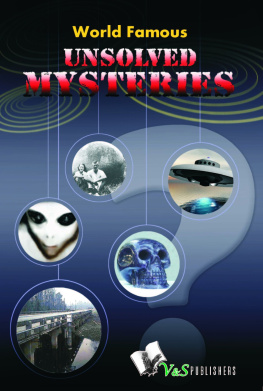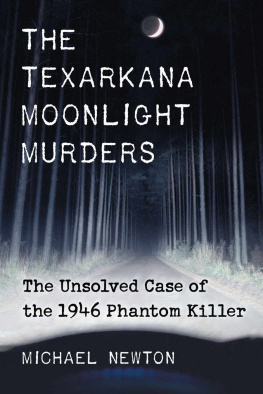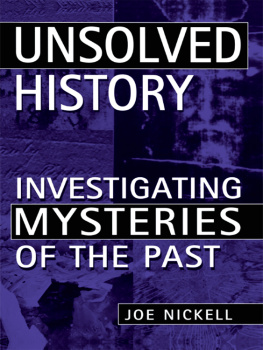Introduction
World War II is one of the best-documented eras in history. Over the course of time secret archives have been opened that have shed new light on previously doubtful events. DNA testing now makes it possible to positively identify uncertain remains and there are far fewer unknown facts about the conflict than in the 1980s.
In spite of our extensive knowledge of the period many aspects of it are still rather unclear. A large number of these mysteries remain enigmas while in other cases probable explanations are now available.
Unsolved Mysteries of World War II deals with a wide range of topics. Did a German woman pilot fly to New York and Michigan, for example, and why did two German submarines disappear for two months after the end of the war before finally surrendering to Argentina?
Another incident, the 1939 bomb plot in a Munich beer cellar, has attracted a variety of conspiracy theories. Unsolved Mysteries unravels the story and separates fact from myth, propaganda and downright fabrication to suggest the most plausible explanation for the failed assassination attempt on Hitler.
Unsolved Mysteries examines stories from Britain, America, Russia, France, Germany, Italy, North Africa and Japan. While doing so, it considers several mysterious deaths and the possible survival of various people including Hitler and Bormann.
Espionage during the war involved considerable disinformation by both the Allied and the Axis powers. The Velser Affair, where a number of Dutch Resistance fighters were murdered in the closing stages of the war, remains a baffling mystery. Whether they were killed by Nazis, collaborators or Dutch anti-Communists is still unclear. Police officers who attempted to investigate the murders received death threats.
The Battle of Los Angeles involved considerable military activity against what were believed to be Japanese aircraft. The theory that Los Angeles was under attack by enemy aircraft has long been disproved but the true nature of the events remains uncertain.
World War II saw looting on an epic scale and the whereabouts of many of these lost treasures is still unknown. For instance, the famous Amber Room presented to Peter the Great by the King of Prussia vanished at the end of the war. Was it destroyed by bombing and shelling, stolen by the Nazis or removed by the Russians? The whereabouts of the Nazi blood flag and Hitlers globe immortalized by Charlie Chaplin in the film The Great Dictator also remain unknown. Nazi gold reserves held by the Reichsbank were plundered too, by different people and groups including the SS, the Red Army and the US military. Their present location is still an enigma.
The World Trade Fair in 1940 saw a mysterious explosion which killed two policemen. Responsibility for planting the bomb has never been satisfactorily established.
Military mysteries include the unexpected collapse of the French Army in 1940, the failure of German tanks to advance against Dunkirk and the lack of adequate protection for and communication with the US Pacific Fleet at Pearl Harbor.
Unsolved Mysteries of World War II deals with these and many other secrets of the war. Hesss flight to Britain and the actor Leslie Howards death in a civilian plane shot down by the Luftwaffe are well known. Other stories in Unsolved Mysteries are less familiar.
While dealing with many incidents of major importance Unsolved Mysteries also examines more minor events during the war. There are still questions about many aspects of World War II that remain unanswered. In some cases probable explanations exist but other secrets have never been revealed. The truth about them may never be known.
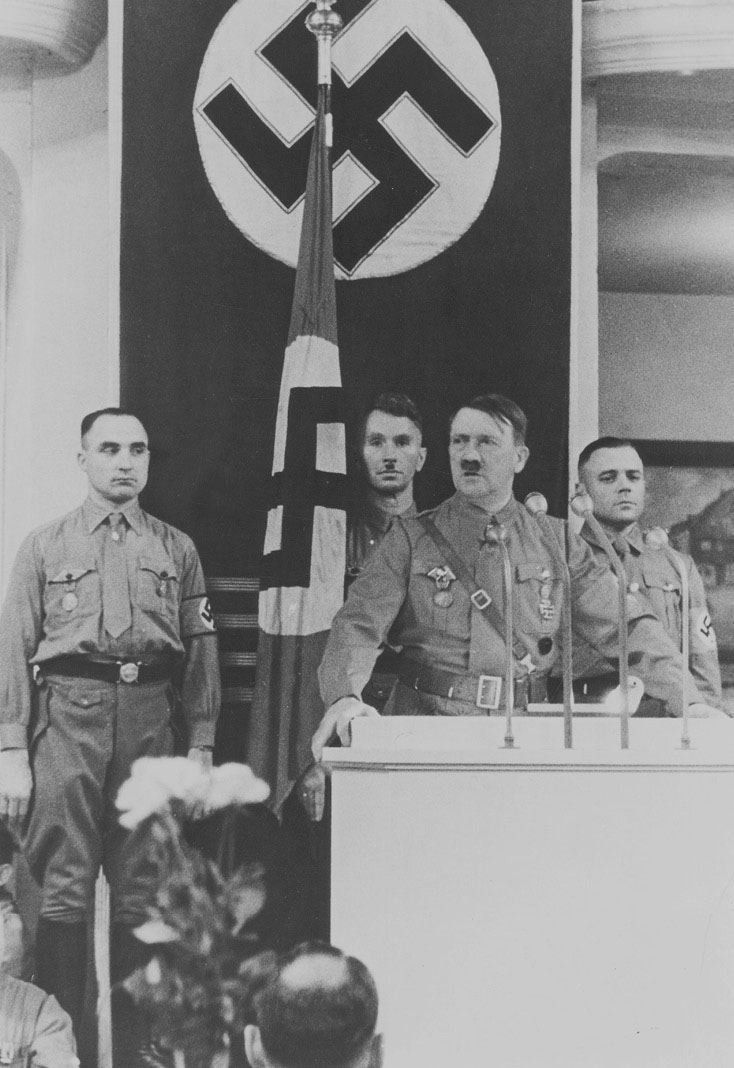
Hitler at the Brgerbrakeller, Munich in 1938. In the background is the Blutfahne (blood flag) held by its special attendant Jakob Grimminger. The flag disappeared in 1944 and was never seen again.
Chapter One
The Battle Of Los Angeles
The Battle of Los Angeles was a curious event that took place between 24 and 25 February 1942. Explanations for it vary wildly. It occurred less than three months after the Japanese attack on Pearl Harbor and only a day after Japanese submarine 1-17 bombarded Ellwood. The first thought was that an air raid had been launched from Japan but this idea was quickly dismissed by the Secretary of the Navy.
The night of 2425 February saw a flurry of air raid sirens. Air raid wardens rushed into position and a total blackout of the area was ordered. Then at 3.16 a.m. the 37th Coast Artillery Brigade took the decision to begin firing .50 calibre machine guns and 12.8-pound anti-aircraft shells at the unidentified object. Pilots were also alerted but no planes were sent up into the air. The firing continued until 4.14 a.m., when the all-clear signal was sounded, and the blackout was lifted by 7.21 a.m.
The shells damaged buildings and vehicles and five people lost their lives two as a result of heart attacks induced by the stress of the hostilities and three in car accidents. Within a few hours of the raid being terminated, the Navy Secretary held a press briefing in which he attributed the incident to what he called war nerves. General George C. Marshall suggested that commercial planes might have been used as a psychological warfare tactic.
The press remained suspicious. There was speculation that the unprepared US authorities had been caught out by secret Japanese attacks and were trying to conceal their own inefficiency. Ideas about hidden bases in Mexico and a fleet of Japanese submarines offshore armed with long-range weapons were put forward. Another theory was that the government had staged the whole thing deliberately to give it an excuse to move industries situated on the coast to sites further inland.
Santa Monica Congressman Leland Ford demanded a full Congressional investigation, declaring:
None of the explanations so far offered removed the episode from the category of complete mystification ... this was either a practice raid, or a raid to throw a scare into 2,000,000 people, or a mistaken identity raid, or a raid to lay a political foundation to take away Southern Californias war industries.
His demands were ignored and the events remained a mystery and the subject of speculation and conspiracy theories.
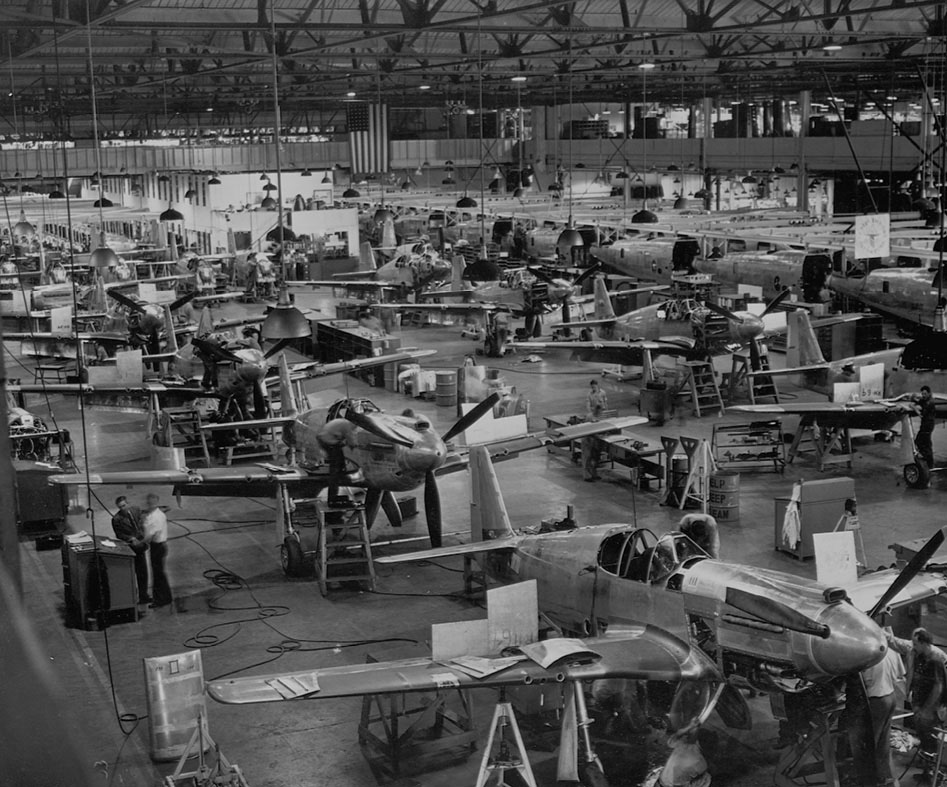
The North American Aviation factory at Inglewood, near LA, ramped up its production of P-51 Mustangs ready to rebuff marauding enemy aircraft, 1942.
Ellwood attack
Pearl Harbor was still fresh in peoples minds and the submarine attack on Ellwood the day before had created a sense of panic. In this atmosphere, it is not surprising that the event became a major news story and that conspiracy theories were soon woven around it.
The devastation caused by the raid on Pearl Harbor was magnified by Japanese naval activity and Japan sent seven submarines to patrol the West Coast of America. Twice, the submarines became involved in fights with American naval or air forces and they sank several merchant ships. By late December, they returned to Japan for maintenance and supplies.
Japanese submarine 117 then returned to American waters. Before the war its commander, Kozo Nishino, had been in charge of a merchant ship and had refilled his vessel with oil before returning to Japan. While walking to the refinery he tripped and fell into some prickly pear cactus. The oil workers laughed when he had cactus spines removed from his buttocks and there was speculation that this incident may have led Nishino to target the oil refinery when his submarine was within range of it.

